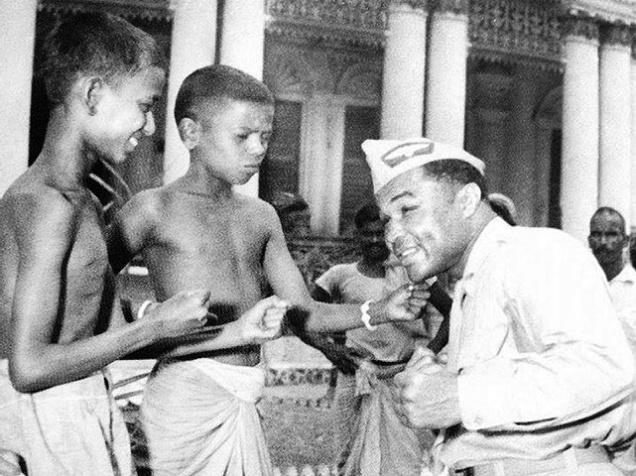A unique photograph of the elephant (1797), archived by the New York Historical Society, is now exhibited in the city.
“It will be a great thing to carry the first elephant to America,” wrote Jacob Crowninshield, the captain of the ship America. The first living elephant, which was ferried all the way from Kolkata to the US, was later exhibited in Boston, New York and Philadelphia.
A unique photograph of the elephant (1797), archived by the New York Historical Society, is now exhibited in the city. Alongside The Elephant, 41 rare photos, collected over the last 150 years, form part of the exhibition titled ‘Kindred Nations: The United States and India: 1783-1947’at The Indian Museum here that opened during this weekend.
The exhibition tells the story of association between the two countries long before the latest thrust to step up diplomatic and trade ties were initiated.
One compelling example is the photograph of the Indian immigrant workforce in the US. It is perhaps a less-known fact that a significant share of the workforce involved in building modern America migrated from northern India.
At least two of the photographs taken around World War II underscore the role of Sikh immigrants in the construction of rail roads or them joining various other trades. The exhibits also narrate how Americans engaged in building ties with Indians.
Henry Armstrong, one of the greatest American boxers of all times, visited India during World War II and graced an amateur boxing tournament in Kolkata. A candid picture of the pugilist giving spontaneous boxing lessons to local youth (1945) also forms a part of this exclusive exhibit.
Photographs of celebrated Anglo-Indian actor Merle Oberon, who shot in West Bengal for a film, and Charlotte Wiser, an American anthropologist, teaching childcare techniques to local villagers at Allenganj (1919), provide the viewers with an insight about the ever-evolving ties between the two countries.
It all started with bilateral trade relations. From education, cultural and religious values, cinema, jazz music, Kashmiri shawls, books on navigation — India and the U.S have shared them all. There was also a rare shot of Anandibhai Joshi (1880), the first Indian woman to earn a medical degree in the U.S.
Shots of Singer Manufacturing Company’s office (1897), the famous Atkinson house (1860), Swami Vivekananda with his American counterparts at Green Acre School (1894) and Rabindranath Tagore holding the delicate hands of the blind and deaf American activist and author Helen Keller are the other notable ones.
However, some these exhibits are widely circulated on the Internet.
Curated by the Meridian International Center in Washington D.C. and supported by the U.S. Department of State, the photographs and letters speak of what is described as ‘shared prosperity and peace’. Dr. Jayanta Sengupta, Director of Indian Museum, said it was “an honour” to host the exhibition.
“As a museum, we always explore the interstices of cultures and the connections between them, and what better way to do this than by celebrating the two centuries of historical connections between the world’s two largest democracies?” he asked.
Acting U.S. Consul General Cory Wilcox, on his part, complemented Dr Sengupta. “Through the medium of art, we begin a dialogue about our perspectives and values. We hope this exhibit of the past engagement sparks our imagination for the future, seeing how we can take steps to improve the lives of the next generations in both our countries,” Mr Wilcox told The Hindu.
The exhibit was earlier on display in New Delhi, Chennai, Hyderabad, Mumbai with Kolkata being the last stop, where it will continue till the last day of the year.
source: http://www.thehindu.com / The Hindu / Home> National / by Ayshika Mitra / Kolkata – December 07th, 2015
